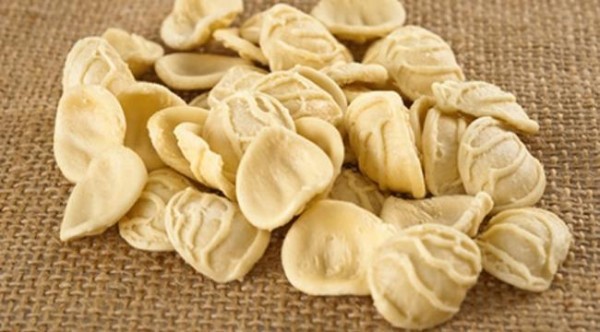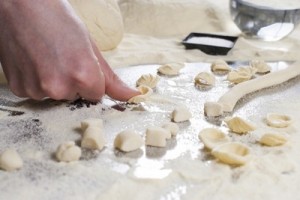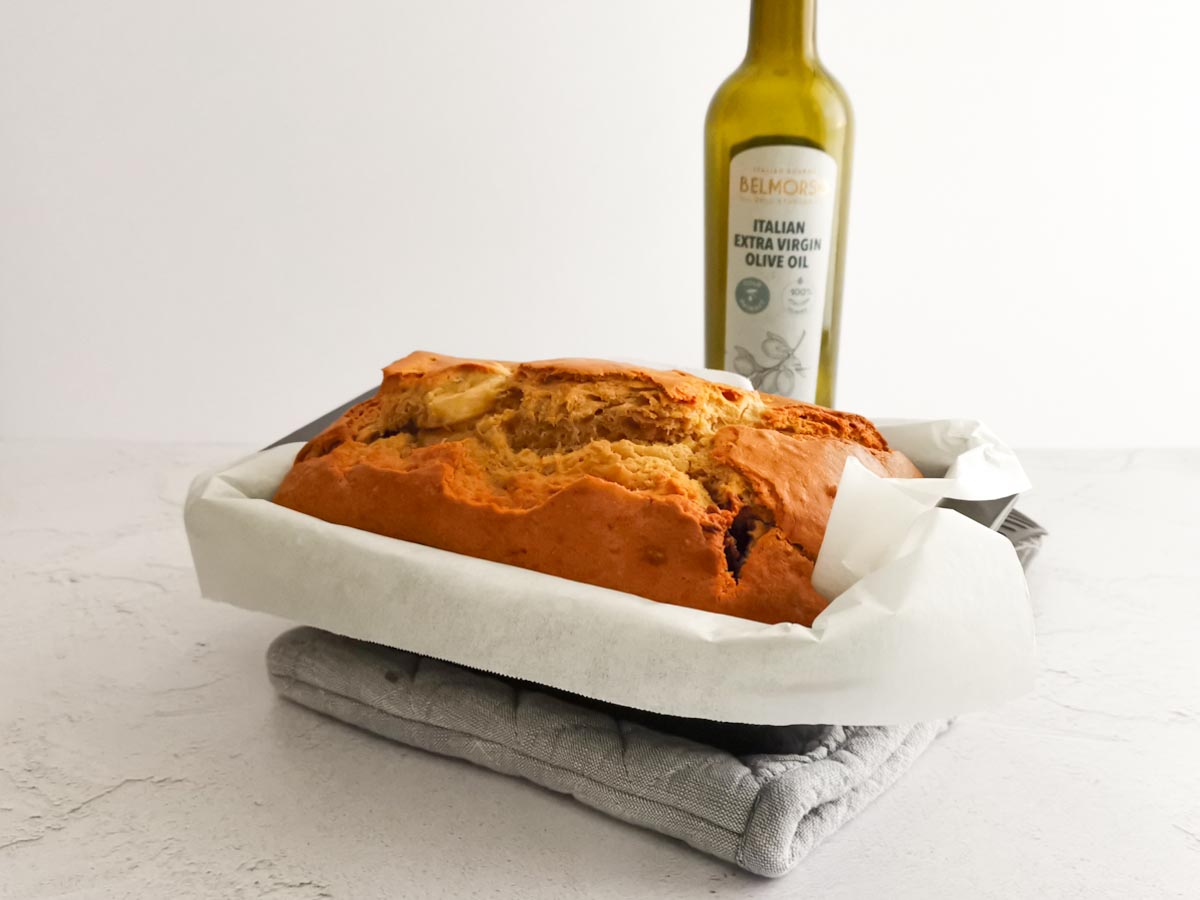
The Pasta Teller – Chapter 2: Orecchiette
“Orecchiette“ is a typical kind of pasta from Puglia. Its name comes from its concave shape, since “orecchiette” literally means “little ears”. The ingredients are just plain durum or wholewheat flour, water and salt.
The dialect word for orecchiette is “L strasc’nat”, which originates from the italian verb “strascinare”, meaning “to stretch”, inspired by the movement needed to shape to the pasta – stretching a tiny bit of dough on a wooden cutting board.
Orecchiette formally emerged for the first time between the XII and XIII century in Bari, main city of Puglia, where they are still considered the most exquisite meal of the city.
Actually, the real origin of this kind of pasta was probably in the Occitan part of the France, where, since the Middle Ages, a very similar type of pasta was made using the French durum wheat. It was a very thick disk-shaped pasta, lowered in the centre by the pressure of the thumb. This particular shape facilitated the drying of the pasta itself allowing for longer preservation. As such, it became useful during famine periods and long ship journeys.
In Bari, Orecchiette is usually dressed with “cime di rapa“, a sort of bitter broccoli, cauliflower, or other kind of vegetables. Less often, they are served with bolognese sauce.
Finally, a nice anecdote. In the past, people were convinced that Orecchiette had the capability to foretell the future, mainly the sex of a newborn during the pregnancy, through a simple ritual. Some orecchiette and just one zito – a sort of long maccheroni – were put in a pot with boiling water. If the first piece of pasta to surface the water was the orecchietta, the newborn would be a girl. Conversely, it would be a boy.





